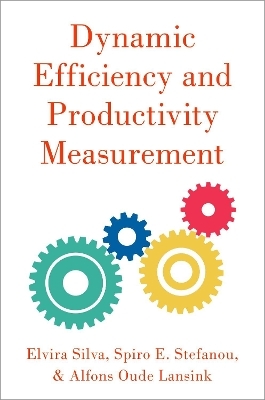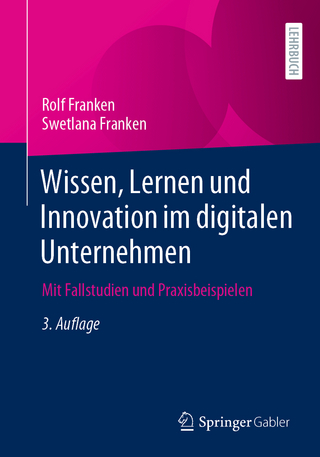
Dynamic Efficiency and Productivity Measurement
Oxford University Press Inc (Verlag)
978-0-19-091947-4 (ISBN)
- Systematic treatment of dynamic decision making and performance measurement
- Develops analytical foundations for dynamic production technology with emphasis on dynamic directional distance functions
- Explains empirical implementation of production and performance measures at length for both nonparametric and econometric approaches
A systematic treatment of dynamic decision making and performance measurement
Modern business environments are dynamic. Yet, the models used to make decisions and quantify success within them are stuck in the past. In a world where demands, resources, and technology are interconnected and evolving, measures of efficiency need to reflect that environment.
In Dynamic Efficiency and Productivity Measurement, Elvira Silva, Spiro E. Stefanou, and Alfons Oude Lansink look at the business process from a dynamic perspective. Their systematic study covers dynamic production environments where current production decisions impact future production possibilities. By considering practical factors like adjustments over time, this book offers an important lens for contemporary microeconomic analysis. Silva, Stefanou, and Lansink develop the analytical foundations of dynamic production technology in both primal and dual representations, with an emphasis on directional distance functions. They cover concepts measuring the production structure (economies of scale, economies of scope, capacity utilization) and performance (allocative, scale and technical inefficiency, productivity) in a methodological and comprehensive way.
Through a unified approach, Dynamic Efficiency and Productivity Measurement offers a guide to how firms maximize potential in changing environments and an invaluable contribution to applied microeconomics.
Elvira Silva is an Associate Professor in Economics at the Faculdade de Economia do Porto, University of Porto, and a member of the research group of the Center in Economics and Finance at the University of Porto (CEF.UP). She serves as the director of the PhD program in Economics at the Faculdade de Economia do Porto. Her research interests include efficiency and productivity measurement and nonparametric modeling.
Spiro E. Stefanou is Professor of Food and Resource Economics at the University of Florida. He is internationally recognized for research focusing on productivity, innovation, and efficiency in the agricultural and food manufacturing sectors in the U.S. and Europe. He holds a part-time appointment as Professor in the Business Economics Group at Wageningen University (Netherlands).
Alfons Oude Lansink is Professor and Head of the Business Economics Group at Wageningen University (Netherlands), Director of the Wageningen School of Social Sciences, and Adjunct Professor at the University of Florida. His research focuses on economic modeling of firm behavior and analysis of technical, economic and environmental performance of farms and agribusiness firms.
Dedication
Forward
Introduction
Chapter 1 Overview
1.1 What Is a Production Technology?
1.2 Production in the Context of Time
1.2.1 Short run versus long run and being in disequilibrium
1.2.2 Changing Capacity
1.3 Characterizing Adjustment
1.3.1 Adjustment Cost Hypothesis
1.3.2 Isoquants
1.3.3 Non-convex production relationships
1.4 Implications of Adjustment for Measuring Performance
Chapter 2 Primal Analytical Foundations of Dynamic Production Analysis
2.1 Introduction
2.2 Set Representation of the Adjustment Cost Production Technology
2.2.1 Adjustment cost production possibilities set
2.2.2 Adjustment cost input requirement sets
2.2.3 Adjustment cost producible output sets
2.3 The Adjustment Cost Transformation Function
2.4 Remarks
Chapter 3 Dynamic Economic Decision Making
3.1 Introduction
3.2 Bellman's Dynamic Programming Approach
3.2.1 Cost minimization: Two-period framework
3.2.2 Iso-cost analysis
3.2.3 Cost curves in the short run and long run
3.2.4 Profit maximization
3.3 Generalization to the Continuous Time Case
3.3.1 Cost minimization
3.3.2 Profit maximization
3.3.3 Dynamic duality implications
3.4 Formulating the Cost Minimization Problem in DEA
3.5 Remarks
3.5.1 Nonparametric approaches
3.5.2 Parametric approaches
Chapter 4 Dynamic Decision Making, Distance Functions, and Productive Efficiency
4.1 Introduction
4.2 Adjustment-cost Directional Distance Functions
4.2.1 Directional technology distance function
4.2.2 Directional input distance function
4.2.3 Directional output distance function
4.3 Dynamic Duality and Measurement of Productive Efficiency
4.3.1 Intertemporal cost minimization and duality
4.3.2 Temporal cost inefficiency measures
4.3.3 Temporal profit inefficiency measures
4.4 Remarks
4.5 Appendix: Proof of Lemmas
4.6 Appendix: Proof of Properties DDT.1-DDT.8
4.7 Appendix: Proof of DDI.1-DDI.9
Chapter 5 Dynamic Structure of Production and Productivity Change
5.1 Introduction
5.2 Scale, Scope, and Capacity Utilization
5.2.1 Scale elasticity
5.2.2 Cost elasticities and economics of size
5.2.3 Economics of scope and cost concepts
5.2.4 Capacity utilization
5.3 Constructing Measures of Productivity
5.3.1 Structural approach
5.3.2 Luenberger indicator
5.4 Remarks
Chapter 6 Econometric Approaches
6.1 Introduction
6.2 Functional Forms
6.3 Structural Parametric Approaches
6.3.1 Estimation of dynamic inefficiency
6.3.2 Estimation of Luenberger TFP growth
6.3.3 Results
6.4 Remarks
Chapter 7 Nonparametric Approaches
7.1 Introduction
7.2 Empirical Nonparametric Construction of Dynamic Efficiency
7.2.1 Compute shadow value using the Linear Complementarity Problem
7.2.2 Compute shadow value from the dual problem
7.2.3 Compute shadow value from the directional distance function
7.2.4 Compute shadow value from a parametrically estimated value function
7.3 Empirical Construction the Inner-bound and Outer-bound Technologies
7.4 Remarks
7.5 Appendix: R Code for Estimating Dynamic Technical Inefficiency References .
| Erscheinungsdatum | 25.11.2020 |
|---|---|
| Verlagsort | New York |
| Sprache | englisch |
| Maße | 140 x 210 mm |
| Gewicht | 396 g |
| Themenwelt | Wirtschaft ► Betriebswirtschaft / Management ► Unternehmensführung / Management |
| Wirtschaft ► Volkswirtschaftslehre ► Mikroökonomie | |
| Wirtschaft ► Volkswirtschaftslehre ► Ökonometrie | |
| ISBN-10 | 0-19-091947-7 / 0190919477 |
| ISBN-13 | 978-0-19-091947-4 / 9780190919474 |
| Zustand | Neuware |
| Haben Sie eine Frage zum Produkt? |
aus dem Bereich


